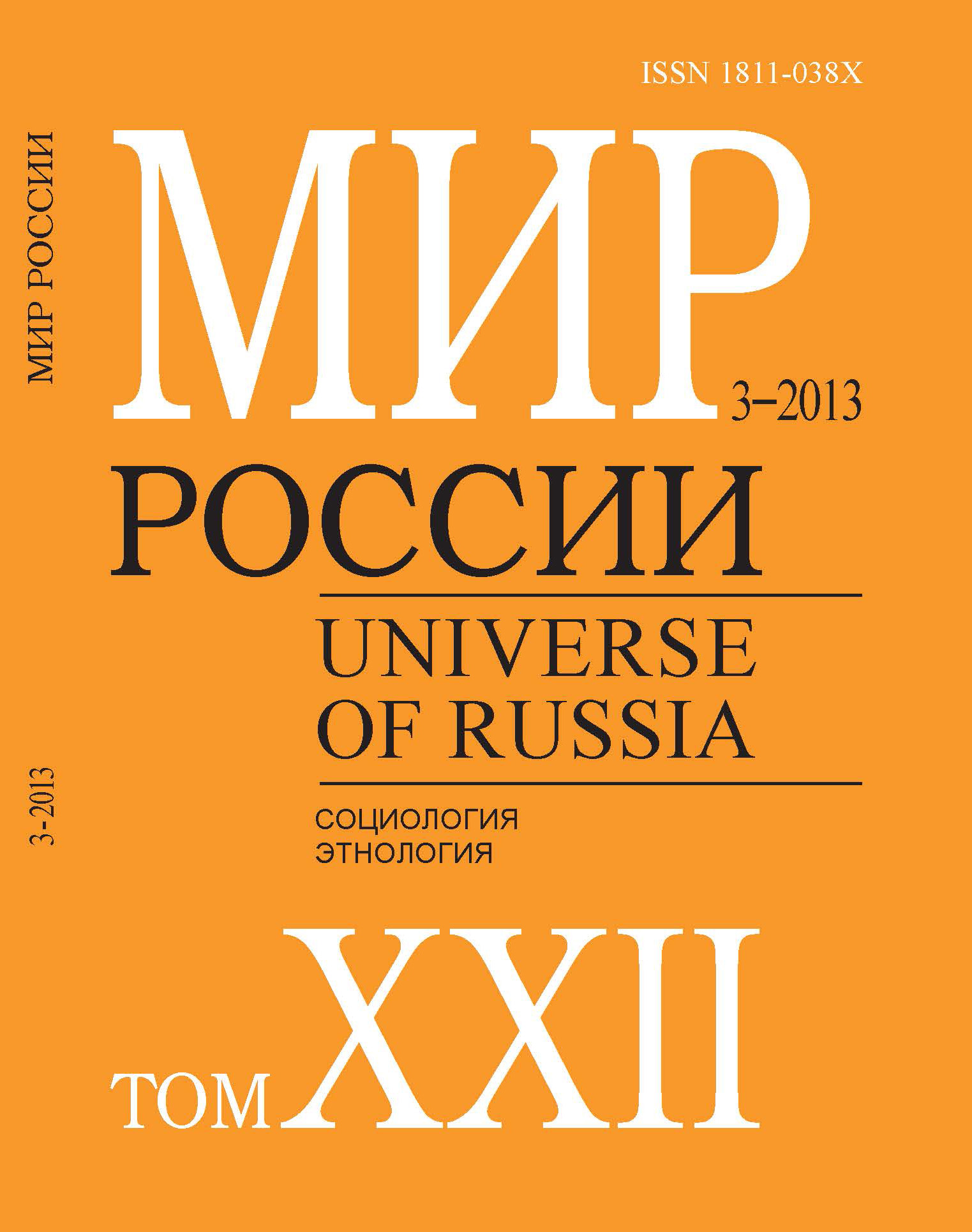Cash Income and Expenditure of the Russian Population: What Are the Changes in Consumer Standards?
Abstract
Liliya Ovcharova — Director, Centre for Analysis of Income and Living Standards of Population, National Research University “Higher School of Economics”. Address: 20, Myasnitskaya St., Moscow, 101000, Russian Federation. E-mail: l.ovcharova@hse.ru
Daria Popova — Leading Research Fellow, Centre for Analysis of Income and Living Standards, National Research University “Higher School of Economics”. Address: 20, Myasnitskaya St., Moscow, 101000, Russian Federation. E-mail: dpopova@hse.ru
This paper analyses the dynamics of living standards of the Russian population in the post-Soviet period. It considers a comprehensive system of indicators of living standards, including cash income, expenditure and consumption measures. The data for the report comes from two sources — national macro-statistics and independent sociological surveys. The government statistics and the microdata are compared whenever possible.
The year 1991, the one that preceded the market transformation in Russia, was chosen as a starting point of analysis. Ideally, 1990 — the last year of the Soviet state — should have been selected as the base year. Unfortunately, the statistical data on some key economic indicators for 1990 are not available. It is noteworthy that several indicators were included in the national statistics even later (for example, the concept of poverty was introduced only in 1992). Therefore, some tables and figures in this report start from the later base year.
For the last twenty years of the post-Soviet era, the income of the Russian population has increased by 50% in real terms. This means that the household sector of the economy has now accumulated substantial material resources. The growth dynamics of the main components of income resulted in a specific income model with the following features: a slow growth of pensions; a high importance of new income sources, such as income from property and entrepreneurial activities; and a high share of non-observed earnings. Further economic development is compounded by high income inequality, especially by high regional disparities. This inequality manifests itself in the concentration of income from property and entrepreneurial activity in small segments of the population, and the absence of an adequate social security system, which would enable the middle class to maintain their standard of living after retirement. However, with more people being involved in financial activities such as credit and savings behavior, there is a tendency of higher income stabilization in the course of a lifetime.
The main characteristics of the structure of household income and consumption, as well as poverty indices, point out that Russia is on the way to the formation of a new consumer standard. This new standard is characterized by a tendency to invest a bigger share of household resources in human capital in order to increase life opportunities. The survival-oriented model has ceased to be typical for most people. The share of food products in total household consumption has declined, while the share of services has doubled over the last twenty years. Even among the poor households (those with income below the subsistence minimum level) every second one has a personal computer, and every third one — a personal car. Almost everyone has a cell phone.
By now, all groups of the Russian population have to spend a larger share of their income on housing and utilities. More than a half of all households have shifted their consumer preferences to buying cars, paying for transport and communication services, as well as eating out, cultural activities, entertainment and travel. The most prosperous and well-educated people invest their resources in health care and further education, demanding services of higher quality. They also require higher transparency in the provision of these services, i.e. the accountability of service providers.






